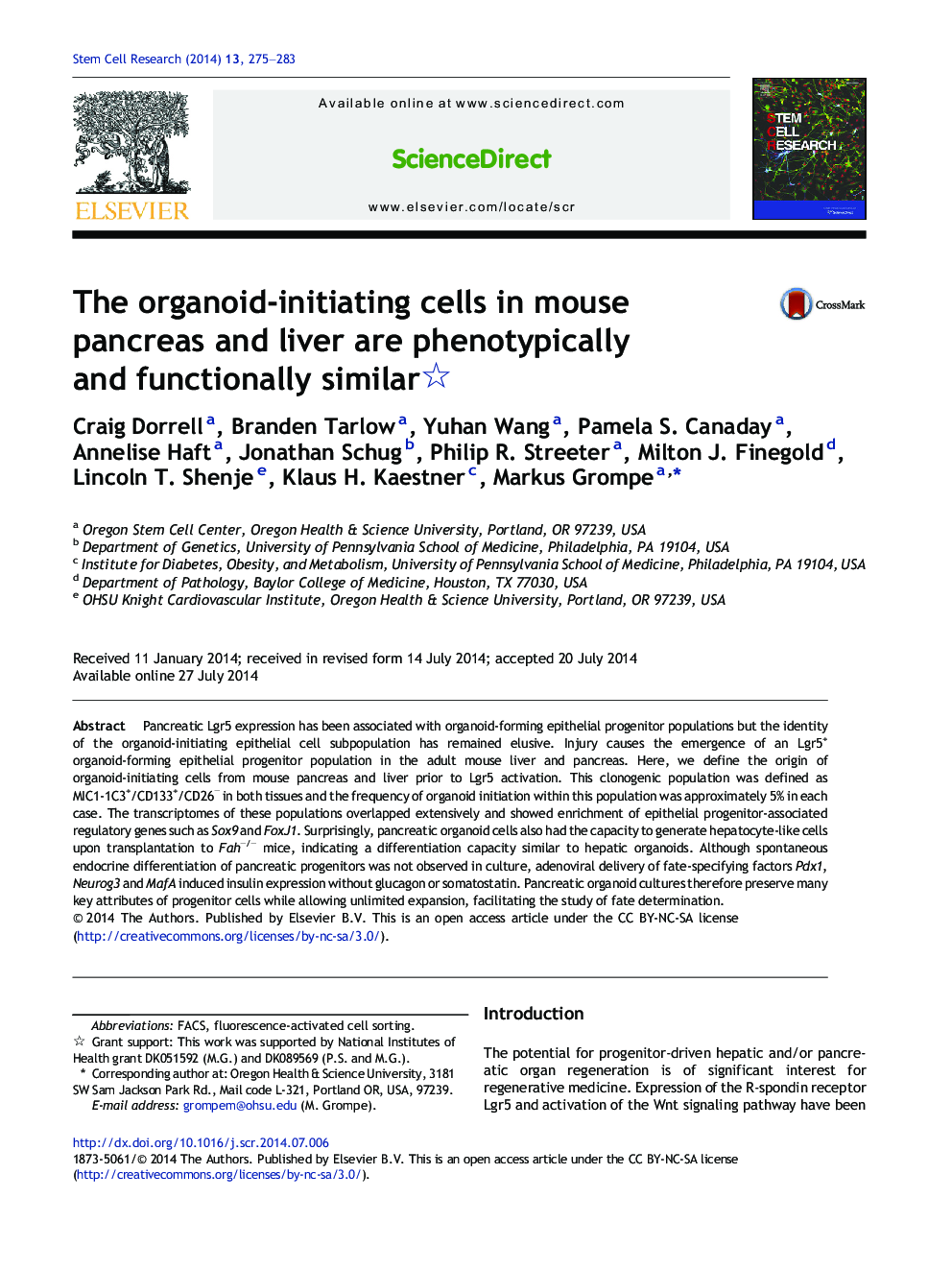| Article ID | Journal | Published Year | Pages | File Type |
|---|---|---|---|---|
| 2094167 | Stem Cell Research | 2014 | 9 Pages |
•We report a shared cell surface phenotype for mouse liver and pancreatic progenitors•The organoid-forming cell frequency is very similar in liver and pancreatic ducts•Single cell analysis shows heterogeneity in the pancreatic progenitor population•Pancreatic organoid cells can form hepatocytes after transplantation
Pancreatic Lgr5 expression has been associated with organoid-forming epithelial progenitor populations but the identity of the organoid-initiating epithelial cell subpopulation has remained elusive. Injury causes the emergence of an Lgr5+ organoid-forming epithelial progenitor population in the adult mouse liver and pancreas. Here, we define the origin of organoid-initiating cells from mouse pancreas and liver prior to Lgr5 activation. This clonogenic population was defined as MIC1-1C3+/CD133+/CD26− in both tissues and the frequency of organoid initiation within this population was approximately 5% in each case. The transcriptomes of these populations overlapped extensively and showed enrichment of epithelial progenitor-associated regulatory genes such as Sox9 and FoxJ1. Surprisingly, pancreatic organoid cells also had the capacity to generate hepatocyte-like cells upon transplantation to Fah−/− mice, indicating a differentiation capacity similar to hepatic organoids. Although spontaneous endocrine differentiation of pancreatic progenitors was not observed in culture, adenoviral delivery of fate-specifying factors Pdx1, Neurog3 and MafA induced insulin expression without glucagon or somatostatin. Pancreatic organoid cultures therefore preserve many key attributes of progenitor cells while allowing unlimited expansion, facilitating the study of fate determination.
